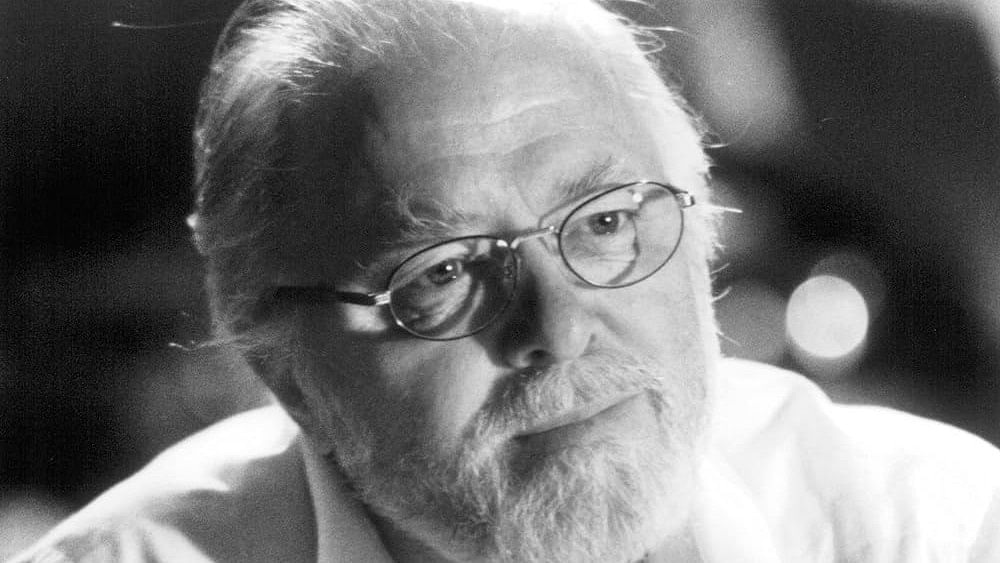
When a reputed journalist remarked “Cry Freedom, Cry Boredom,” Richard Attenborough retorted sharply saying, “Cry cine illiteracy.” The film (‘Cry Freedom’, 1987) set in the late 70s apartheid era in South Africa was Attenborough’s truly personal film as a director. The protester in him was visible in every frame of the film. He championed the cause of black rebellion against white racist oppression in South Africa.
Attenborough was a better director than an actor. No wonder he moulded British actor Ben Kingsley perfectly to perform the character of Mahatma Gandhi in ‘Gandhi’ (1982). He did not unnecessarily dramatise Gandhi with Indian sentiments. Ben Kingsley won the Oscar for his studied performance and Bhanu Athaiya for costume designing. There were stellar performances in ‘Gandhi’ by Rohini Hattangadi, Roshan Seth and Amrish Puri.
Attenborough did admit a major flaw of ‘Gandhi’ was the exclusion of Subhash Chandra Bose in the film. He confessed it was due to surrounding Indian political circumstances. Similarly, he explained he had replaced Pandit Ravi Shankar’s ‘Ram dhun’ and raga-based score with a piece by the London Philharmonic Orchestra to convey greater poignancy. However it was criticised badly by the sitar maestro.
Being an efficient and polished actor himself, Attenborough handled actors well. In his magnum opus, ‘A Bridge Too Far’ (1977), based on Cornelius Ryan’s well known book, he handled a galaxy of stars ranging from Laurence Oliver to Sean Connery, Robert Radford and Liv Ullmann. None appeared a miscast and each performed superbly. The war scenes were shot with utmost care and realistic touches.
Sean Connery running and firing from his revolver and shouting, “Cover fire” as a Scottish army officer was a cinematic highlight of ‘A Bridge Too Far’. It was a continuation of the 1962 battle classic, ‘The Longest Day’. Attenborough made it a point not to glamourise or stylise his creation. Michael Caine who worked in the film as a tank commander remembers how he was mentally inspired by Richard Attenborough to lead his tanks and armoured vehicles. Liv Ullmann’s silent close-ups were memorable.
Though not in the same league as David Lean, Attenborough was at par with J Lee Thompson, Lewis Gilbert and Alan Parker. Christopher Nolan holds him in high opinion. As an actor, Attenborough had a good screen presence, was limited but definitely good in certain characters mainly with war backdrops like ‘Sea of Sand’, ‘Guns of Batashi’ and ‘The Last Grenade’. In Branigan he matched the legendary John Wayne in every scene. Attenborough’s dialogue delivery was full of conviction, sharing screen space with the unpredictable Dirk Bogard in ‘Boys in Brown’, both were equally good. In multi-star projects like ‘Flight of the Phoenix’ and ‘The Great Escape’, he was of the same level as James Stewart and Steve Macqueen.
He himself knew he lacked the class and versatility of Lawrence Oliver, David Niven and Richard Burton. Attenborough’s most memorable performance was in Charles Dickens’ ‘David Copperfield’. As a one-footed person, Attenborough mingled emotions, internal conflicts and subtle nuances brilliantly. He was principal of The Royal Academy of Dramatic Arts and understood well the differences between cinematic and theatrical languages.
After a self -imposed hibernation from acting, he returned with a bang in Satyajit Ray’s ‘Shatranj Ke Khilari’ in 1977. He could not turn down Ray’s request and had proudly said, Ray was a better director than him. As General Outram he outclassed every Indian actor in the film. Ray had said Attenborough gave the least of retakes and rose to the situation like a seasoned performer.
A gentleman to the core, Attenborough possessed a keen sense of music. He cherished memories of dancing to the iconic Mumbo song at Christmas with Sidney Poitier and Paul Newman. Attenborough stepping to E Mumbo was rhythm personified, noted actress and his costar, Lee Remick genuinely felt.